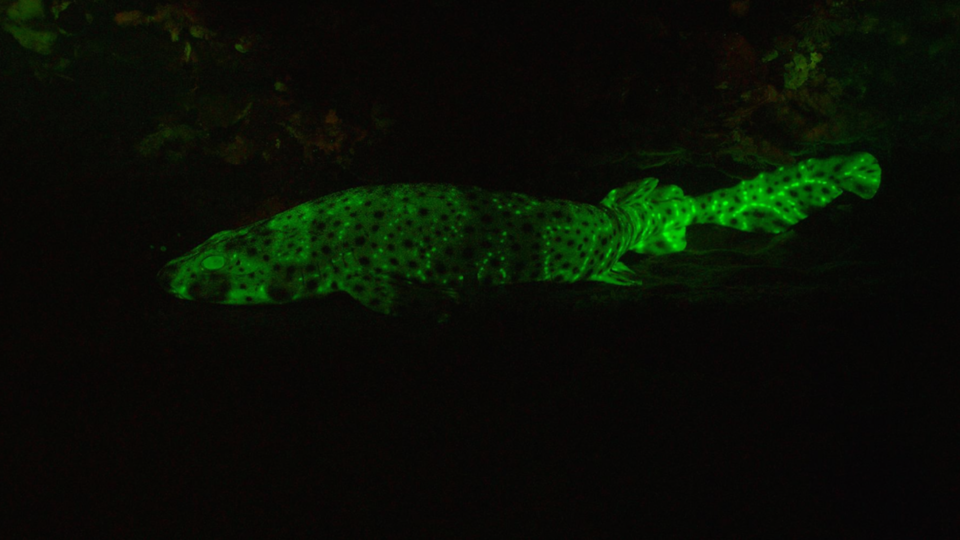Science News
Glowing Sharks

Why do some marine animals glow? For years, we’ve understood that corals and jellies biofluoresce under water, but more recently scientists discovered that a whole host of marine animals—from sea turtles to bony fishes to sharks—also share this trait. But why?
“Our... question was ‘What does all this newfound biofluorescence we are finding in the ocean mean?’” says one of the lead researchers in this field, David Gruber, of Baruch College. “Can these animals see other animals that are biofluorescing in the deep blue sea? And are they using it in some way?”
Biofluorescence is different from bioluminescence. While bioluminescence is a light-generating chemical process that occurs inside an organism’s body, in biofluorescence, the organism’s surface absorbs light, transforms it, and re-emits it as a different color. In the marine environment—which is predominantly blue, especially at depth—Gruber and colleagues have found that many fishes (over 180 species!) absorb the blue light and re-emit it in neon greens, reds, and oranges.
To figure out how this benefits the animals, the team focused in on two species of catsharks: chain catsharks (Scyliorhinus retifer) and swellsharks (Cephaloscyllium ventriosum). First the scientists examined shark eyesight. Using a technique called microspectrophotometry to determine how the sharks’ eyes absorb light, the researchers discovered that sharks have long rod pigments that help them see in low-light environments. The team used this information to build a special camera filter that simulates how light hits a shark’s eyes.
Gruber and team then went on a number of expeditions to Scripps Canyon in San Diego County, where they observed swellsharks in their native habitat, about 100 feet underwater. During night dives, the team stimulated biofluorescence in the sharks with high-intensity blue light arrays housed in watertight cases. While the resulting underwater light show is invisible to the human eye, the researchers used the newly built “shark-eye”camera to get a better idea of how the shark sees the underwater display.
“Some sharks’ eyes are 100 times better than ours in low-light conditions,” Gruber says. “They swim many meters below the surface, in areas that are incredibly difficult for a human to see anything. But that’s where they’ve been living for 400 million years, so their eyes have adapted well to that dim, pure-blue environment. Our work enhances the light to bring it to a human perspective.”
In addition, the researchers found that the contrast of the patterns on the biofluorescent sharks increases with depth, suggesting that the animals can not only see the light, but are also likely using it to communicate with one another.
The study was published last week in Scientific Reports. “This is one of the first papers on biofluorescence to show a connection between visual capability and fluorescence emission,” says John Sparks, one of Gruber’s co-authors on the study, “and a big step toward a functional explanation for fluorescence in fishes.” We give it a glowing review!
Image: David Gruber